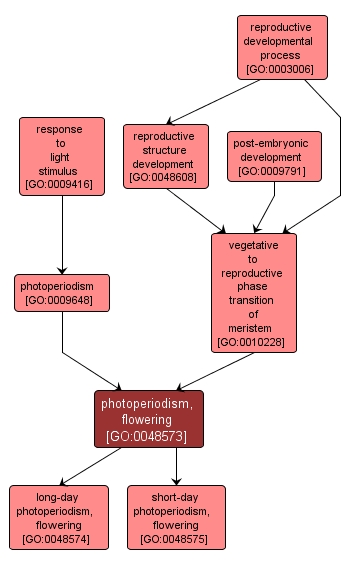GO TERM SUMMARY
|
| Name: |
photoperiodism, flowering |
| Acc: |
GO:0048573 |
| Aspect: |
Biological Process |
| Desc: |
A change from the vegetative to the reproductive phase as a result of detection of, or exposure to, a period of light or dark of a given length. The length of the period of light or dark required to initiate the change is set relative to a particular duration known as the 'critical day length'. The critical day length varies between species. |
Synonyms:
- response to night length, flowering
- response to photoperiod, flowering
- photoperiodic control of inflorescence development
- response to day length, flowering
- photoperiodic control of flowering time
|
|

|
INTERACTIVE GO GRAPH
|














